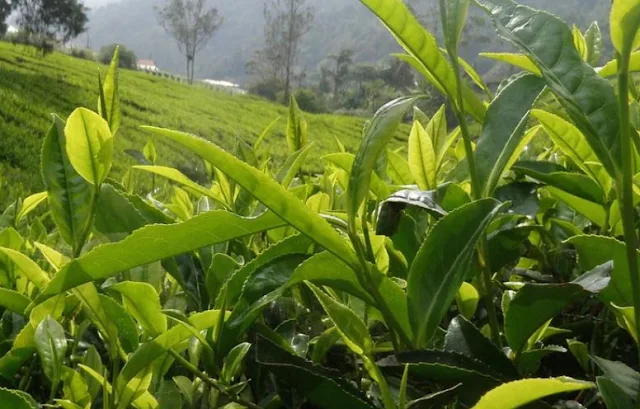Exploring the Exquisite Varieties of Darjeeling Tea: A Journey of Flavours, Uses, and Health Benefits
 |
| Darjeeling Tea |
Darjeeling tea, often referred to as the "Champagne of Teas," is renowned worldwide for its exceptional quality, distinctive flavour profiles, and rich cultural heritage. Grown in the picturesque Darjeeling region nestled in the Indian Himalayas, this tea has captured the hearts of tea enthusiasts for generations. In this article, we delve into the diverse varieties of Darjeeling tea, their uses, and the numerous health benefits they offer.
(toc) #title=(Table of Content)
1. Darjeeling First Flush Tea:
The First Flush Darjeeling tea, also known as the "Spring Flush," is harvested during the first weeks of spring, usually from late February to mid-April. This tea is celebrated for its delicate, light-bodied brew with a pale golden hue. Its flavour is characterized by floral and fresh green notes, often accompanied by a subtle astringency. First Flush Darjeeling tea is best enjoyed on its own, without milk or sweeteners, to fully appreciate its nuanced flavours.
2. Darjeeling Second Flush Tea:
Harvested in the summer months, from late May to June, the Second Flush Darjeeling tea boasts a bolder character compared to the First Flush. It offers a deep amber liquor with a fuller body and a more pronounced muscatel flavour. The muscatel notes, often described as reminiscent of grapes, give this tea a unique and sought-after taste. Second Flush Darjeeling tea is versatile and can be enjoyed both plain and with a touch of milk.
3. Darjeeling Autumn Flush Tea:
The Autumn Flush Darjeeling tea is picked during the months of October and November. This variety is known for its darker infusion and earthier, mellow flavours. It tends to be less astringent than the First and Second Flush teas, making it suitable for those who prefer a smoother cup. While not as well-known as the other flushes, the Autumn Flush Darjeeling tea is still a delightful choice for tea enthusiasts.
4. Darjeeling Green Tea:
Darjeeling Green tea is made from the leaves of the tea plant that undergo minimal oxidation during processing. It retains more of the natural antioxidants and has a vibrant, grassy flavour profile. With its light and refreshing taste, Darjeeling Green tea offers a lower caffeine content compared to black teas, making it an excellent choice for those seeking a milder yet invigorating tea experience.
5. Darjeeling White Tea:
Among the rarest and most delicate varieties, Darjeeling White tea is made from young, tender tea buds and leaves that undergo minimal processing. It is revered for its subtle sweetness, floral aroma, and pale, almost colourless liquor. The gentle processing method helps preserve the natural antioxidants and potential health benefits of the tea leaves.
Health Benefits of Darjeeling Tea:
Beyond its exquisite flavours, Darjeeling tea offers a range of potential health benefits:
Rich in Antioxidants:
Darjeeling tea, particularly the green and white varieties, contains antioxidants such as catechins and flavonoids that help combat oxidative stress and reduce the risk of chronic diseases.
Boosts Metabolism:
The caffeine content in Darjeeling tea can provide a mild energy boost and may aid in enhancing metabolic functions.
Heart Health:
The flavonoids in Darjeeling tea may contribute to cardiovascular health by helping to lower blood pressure and reduce cholesterol levels.
Digestive Aid:
Some compounds in Darjeeling tea are believed to have digestive benefits, aiding in digestion and promoting a healthy gut.
Stress Relief:
The amino acid L-theanine present in Darjeeling tea can have calming effects, promoting relaxation and stress reduction.
Oral Health:
Certain compounds in Darjeeling tea possess antibacterial properties that may contribute to improved oral hygiene.
Incorporating Darjeeling Tea into Your Routine:
Darjeeling tea is not only a delight to the taste buds but also a versatile ingredient in various culinary creations. Apart from savouring it in its pure form, you can experiment with:
Iced Darjeeling Tea:
Brew Darjeeling tea and chill it for a refreshing iced beverage, optionally adding lemon, mint, or sweeteners.
Tea Cocktails:
Craft innovative cocktails by infusing Darjeeling tea with spirits, mixers, and fruits.
Tea-Infused Cuisine:
Use Darjeeling tea as a marinade for meats, a base for sauces, or an ingredient in desserts like tea-infused ice cream.
Tea Blends:
Create custom blends by combining different flushes of Darjeeling tea or mixing it with other teas and herbs.
The diverse varieties of Darjeeling tea offer a spectrum of flavours, aromas, and health benefits that cater to a wide range of preferences. Whether you're an avid tea connoisseur or a casual tea drinker, Darjeeling tea provides an opportunity to embark on a sensorial journey that celebrates the art of tea cultivation, processing, and appreciation.
So, brew a cup of Darjeeling tea, take a sip, and let the essence of the Himalayas unfold in your teacup.
Disclaimers :
All the information on this website – https://searchdarjeeling.com/ – is published in good faith and for general information purpose only. searchdarjeeling.com does not make any warranties about the completeness, reliability and accuracy of this information. Any action you take upon the information you find on this website (searchdarjeeling.com), is strictly at your own risk. searchdarjeeling.com will not be liable for any losses and/or damages in connection with the use of our website.
Like our Facebook page for Latest Notification



Drop your Views & Queries